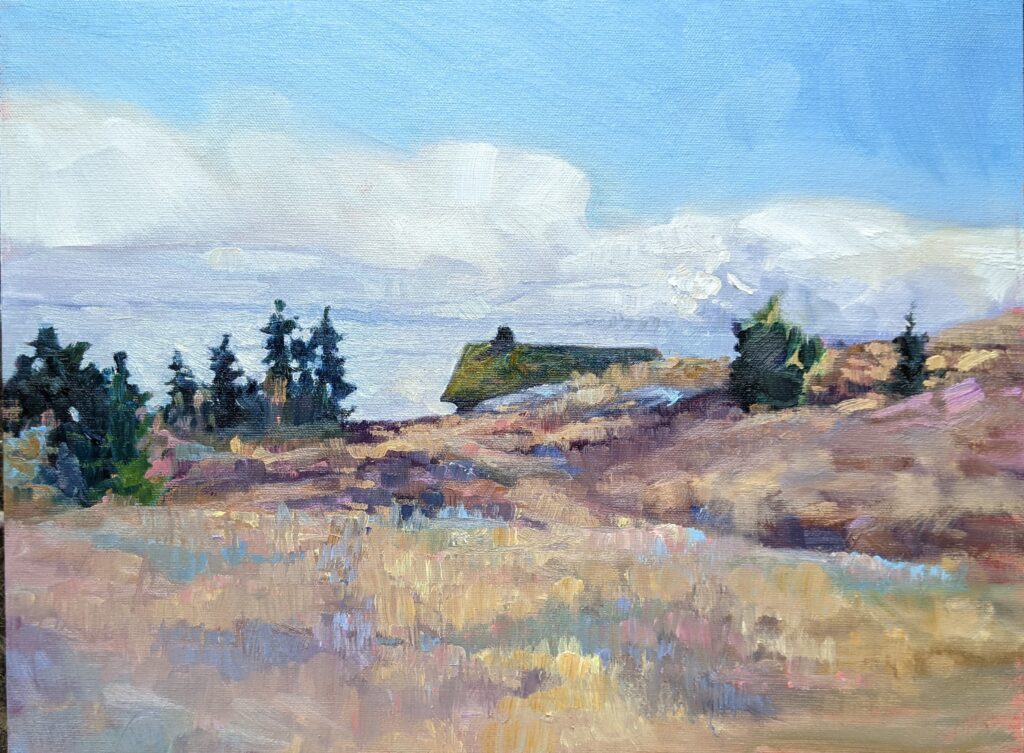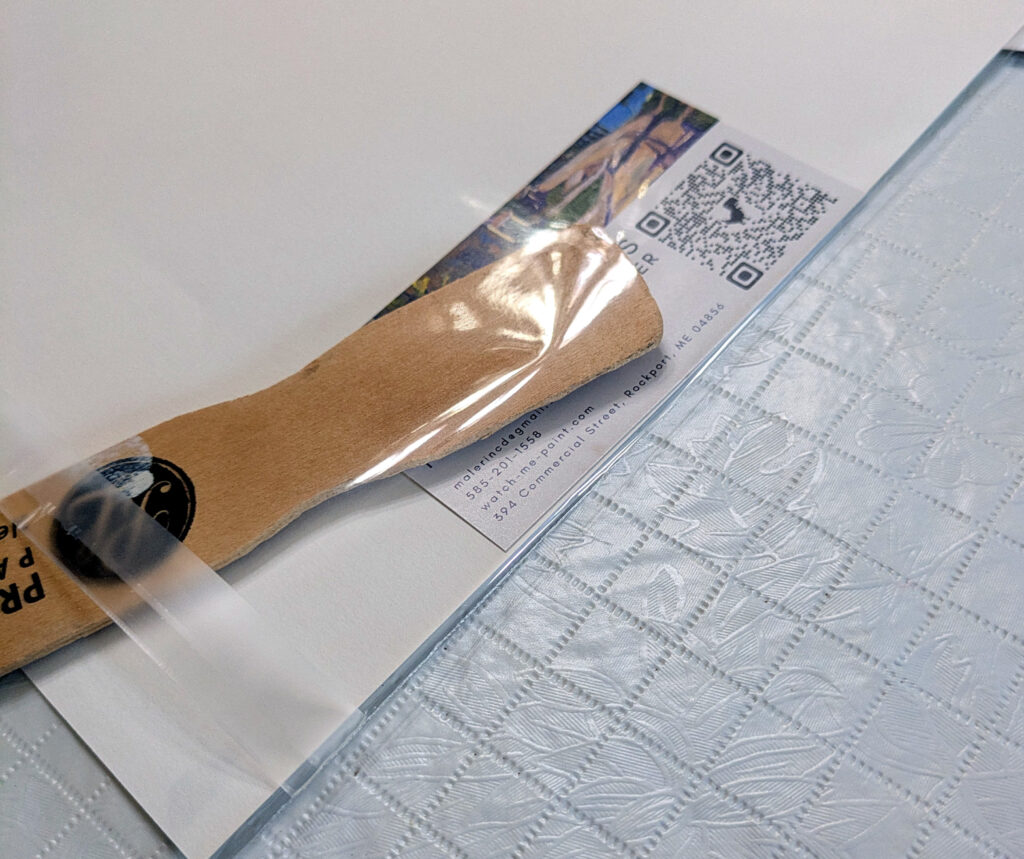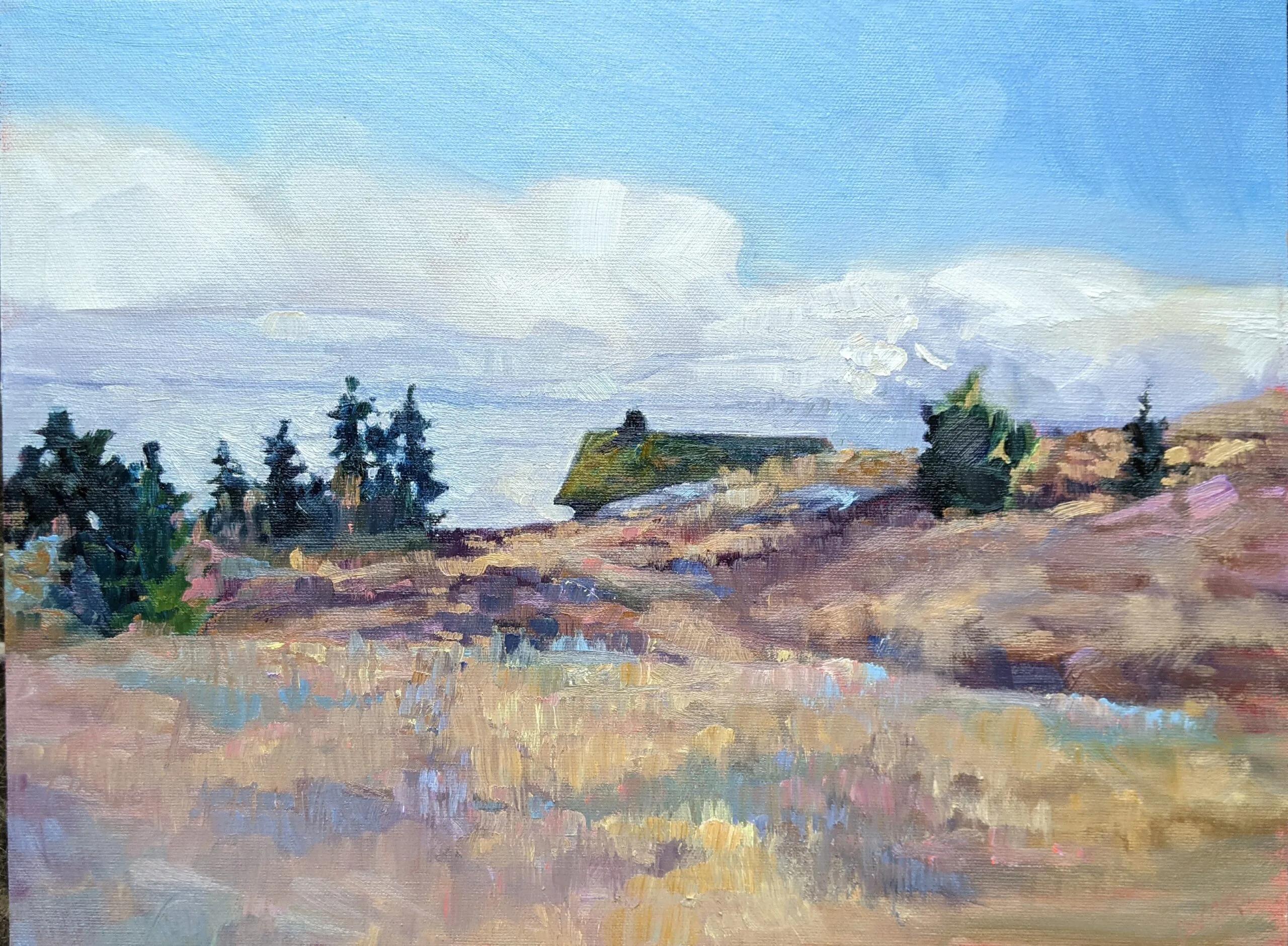
This past weekend, I sat down with a pencil and a template and signed and numbered 75 prints of Early Spring on Beech Hill for Coastal Mountains Land Trust. I’m happy to do this little thing; I’m on their properties almost daily. If I’m not up Beech Hill, I’m on Ragged or Bald Mountains. If you look at a list of their preserves, you realize how much they shape everyday life here in midcoast Maine.
Back in the day, I sold a lot of prints. They are a great way for people of modest means to start collecting art, and they can introduce young people to your work.

What is a fine art print?
A fine art print is a high-quality reproduction of an original artwork. There’s overlap between fine art prints and the art of printmaking. For example, until the turn of the last century, etching was both an artform and a way to reproduce other artwork for publication.
The gap between fine art prints and what you can get from your ink-jet printer has narrowed. Even the cheapest art book published in this century has better illustrations than an old Janson’s History of Art, which was once the preferred text for art history classes.

Fine art prints are made with an eye to durability, color accuracy, and aesthetic integrity. They are often produced in limited editions and signed and numbered by the artist. The main printing methods for fine art prints include:
- Giclée Printing: This is the most common method of making small-run art prints. Giclée printers have higher resolution than standard inkjet printers, and use a 12-color printing system instead of the standard 4-color CMYK system. They use high-quality inks that can last a lifetime, and the prints are resistant to damage from smudging, sun, and humidity.
- Commercial Lithography: That’s the traditional printing process used in bookmaking and periodicals, and is done on an offset press. It’s suitable for mass runs, so if you were to buy a print of, say, Constable’s The Hay Wain from the National Gallery it would be made in this manner.
- Screen printing, where ink is pushed through a mesh screen onto paper or canvas. This is how you’d reproduce your paintings on textiles, pens, coffee mugs, or huge signs, if you were so inclined.

Limited edition prints
Collectors often seek out limited edition prints due to their rarity and because they might appreciate in value. There is no difference in quality between the limited edition print and its open-run cousin; the value rests in the artist’s signature. For example, I can never make another limited-edition run of Early Spring on Beech Hill, because I’ve already done a set run of 75 copies.
The quality question
My color laser printer does a fine job of printing, and with the proper paper its output would be highly durable, but I wouldn’t use it for high-end prints; it’s too small and there are visible differences in quality. There are many sources online for archival-quality giclée prints at a reasonable price.
Most of the quality of your print rests in the photography, not the printing. In the past, I’ve had my paintings shot by a service, but I now have a high-end camera. If you go that route, however, you need to understand color correction, compression, and other issues that affect output.
Should you sell prints?
That’s a question only you can answer. Prints can increase your market reach and give you a more consistent revenue stream. If your print becomes popular, it can generate revenue over time.
However, there’s still the initial investment of time and money to consider. And you never get away from marketing. Prints are an already-saturated market, although a much larger one than the market for original paintings.
Reserve your spot now for a workshop in 2025:
- Advanced Plein Air Painting, Rockport, ME, July 7-11, 2025.
- Sea and Sky at Acadia National Park, August 3-8, 2025.
- Find Your Authentic Voice in Plein Air, Berkshires, MA, August 11-15, 2025.
- Immersive In-Person Fall Workshop, Rockport, ME, October 6-10, 2025.


As a printmaker, I really wish everyone would just call them reproductions. I call my block prints “fine art prints” as a way to distinguish between the two, but now I see you using the same terminology! Every art fair I sell at I spend so much energy trying to educate folks about the difference between a hand made print and a digital reproduction.
Also, do they need to be signed in pencil? Photographers sign in pen, and I consider reproductions in the same vein. Is there a standard practice? (And I’m right there with ya on the misspelling of my own name!)
Thank you for your insightful comment. My inclination is to call original works by their specific type: lithograph, collagraph, monotype, etc. I think part of the problem is that “reproduction” doesn’t roll off the tongue!
I’ve never seen them signed in anything but pencil but that means very little. My guess is that it has something to do with the archival influence of lead vs. ink.
My inkjet printer does a wholly acceptable job printing reproductions of my artwork for cards that I use for myself and give to friends as gifts. The few times I’ve reproduced my art for giclée prints, I went to a pro and was happy with the final product. I have never tried selling prints of my paintings.